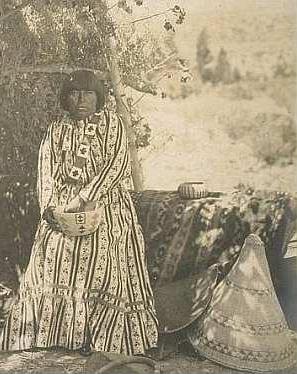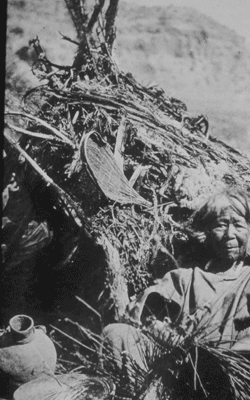|
Kutzadika'a
The Kucadɨkadɨ are a band of Eastern Mono Northern Paiute people who live near Mono Lake in Mono County, California. They are the southernmost band of Northern Paiute.Fowler and Liljeblad 437Arkush, Brooke S"Historic Northern Paiute Winter Houses in Mono Basin, California."''Journal of California and Great Basin Anthropology''. 9 (2) 1987 (retrieved August 31, 2010) Name Kucadɨkadɨ means "eaters of the brine fly pupae". They are also known as the Kutsavidökadö, Koza'bittukut'teh, Kotsa'va, Mono Lake Paiute, Mono Basin Paiute, and Kuzedika, while the tribe itself calls themselves Kootzaduka’a. The term "Mono Lake Paiute," a holdover from early anthropological literature, has proven problematic. The term "Mono" is from a Yokutsan loanword from the tribe's southwestern neighbors, the Yokuts, who designated the band living around Mono Lake as ''monachie/monoache'' (" fly people") because fly larvae were their chief food staple and trading article. Later researchers believed t ... [...More Info...] [...Related Items...] OR: [Wikipedia] [Google] [Baidu] |
Mono Lake, California
Mono Lake ( ) is a saline soda lake in Mono County, California, formed at least 760,000 years ago as a terminal lake in an endorheic basin. The lack of an outlet causes high levels of salts to accumulate in the lake which make its water alkaline. The desert lake has an unusually productive ecosystem based on brine shrimp, which thrive in its waters, and provides critical habitat for two million annual migratory birds that feed on the shrimp and alkali flies (''Ephydra hians''). Historically, the native Kutzadika'a people ate the alkali flies' pupae, which live in the shallow waters around the edge of the lake. When the city of Los Angeles diverted water from the freshwater streams flowing into the lake, it lowered the lake level, which imperiled the migratory birds. The Mono Lake Committee formed in response and won a legal battle that forced Los Angeles to partially replenish the lake level. Geology Mono Lake occupies part of the Mono Basin, an endorheic basin that has no ... [...More Info...] [...Related Items...] OR: [Wikipedia] [Google] [Baidu] |
Mono Tribe
The Mono ( ) are a Native American people who traditionally live in the central Sierra Nevada, the Eastern Sierra (generally south of Bridgeport), the Mono Basin, and adjacent areas of the Great Basin. They are often grouped under the historical label " Paiute" together with the Northern Paiute and Southern Paiute – but these three groups, although related within the Numic group of Uto-Aztecan languages, do not form a single, unique, unified group of Great Basin tribes. Today, many of the tribal citizens and descendants of the Mono tribe inhabit the town of North Fork (thus the label "Northfork Mono") in Madera County. People of the Mono tribe are also spread across California in: the Owens River Valley; the San Joaquin Valley and foothills areas, especially Fresno County; and in the San Francisco Bay Area. Tribal groups The Mono lived on both sides of the Sierra Nevada and are divided into two regional tribal/dialect groups, roughly based on the Sierra crest: * ... [...More Info...] [...Related Items...] OR: [Wikipedia] [Google] [Baidu] |
Owens Valley Paiute
The Mono ( ) are a Native American people who traditionally live in the central Sierra Nevada, the Eastern Sierra (generally south of Bridgeport), the Mono Basin, and adjacent areas of the Great Basin. They are often grouped under the historical label "Paiute" together with the Northern Paiute and Southern Paiute – but these three groups, although related within the Numic group of Uto-Aztecan languages, do not form a single, unique, unified group of Great Basin tribes. Today, many of the tribal citizens and descendants of the Mono tribe inhabit the town of North Fork (thus the label "Northfork Mono") in Madera County. People of the Mono tribe are also spread across California in: the Owens River Valley; the San Joaquin Valley and foothills areas, especially Fresno County; and in the San Francisco Bay Area. Tribal groups The Mono lived on both sides of the Sierra Nevada and are divided into two regional tribal/dialect groups, roughly based on the Sierra crest: * Eastern Mo ... [...More Info...] [...Related Items...] OR: [Wikipedia] [Google] [Baidu] |
Nellie Charlie
Nellie Charlie (1867–1965) was a Mono Lake Paiute - Kucadikadi basketmaker associated with Yosemite National Park. She was born in Lee Vining, California, the daughter of tribal headman Pete Jim, and his wife Patsy, also a basket maker. She married Young Charlie, a Mono Lake Paiute - Kucadikadi man from Yosemite, and they had six children. Her Paiute name was Besa-Yoona. Early life Nellie Charlie was born in 1867 in Lee Vining, California. She was the daughter of tribal headman Pete Jim and his wife, Patsy, who was also a skilled basketmaker. She grew up within the Mono Lake Paiute-Kucadikadi community, where she learned the art of traditional basket weaving from her mother. Personal life She married Young Charlie, a Mono Lake Paiute-Kucadikadi man from Yosemite, and the couple had six children. Her Paiute name was Besa-Yoona. Basket Weaving and Career Charlie was known for her work in both traditional and modern basket styles. She actively participated in the ann ... [...More Info...] [...Related Items...] OR: [Wikipedia] [Google] [Baidu] |
Ephydra Hians
''Ephydra hians'', commonly known as the alkali fly, is a species of fly in the family Ephydridae, the brine flies. Description The body of the adult is dark brown, and roughly in length. The thorax reflects a metallic greenish or bluish color, and the wings are smokey brown. The larva contains a membranous cephalic area, and the rest of the body is divided into 3 thoracic segments and 8 abdominal segments. Distribution and habitat This species is found mostly in the northwestern United States, as well as in Canada and Mexico. The preferred habitat is in the benthic-littoral zone, in habitats containing large amounts of tufa (a porous limestone deposit). Mono Lake in California has a large population of this species. Behavior and ecology Throughout the summertime, the flies, which live for 3 to 5 days, feed and lay eggs under the surface of the water. Upon hatching, the larvae roam underwater, feeding on algae and bacteria. They remain under the water until they develop in ... [...More Info...] [...Related Items...] OR: [Wikipedia] [Google] [Baidu] |
Pinus Monophylla
''Pinus monophylla'', the single-leaf pinyon, (alternatively spelled piñon) is a pine in the pinyon pine group, native to North America. The range is in southernmost Idaho, western Utah, Arizona, southwest New Mexico, Nevada, eastern and southern California and northern Baja California. It occurs at moderate altitudes from , rarely as low as and as high as . It is widespread and often abundant in this region, forming extensive open woodlands, often mixed with junipers in the Pinyon-juniper woodland plant community. Single-leaf pinyon is the world's only one-needled pine.Gerry Moore et al. 2008 Description ''Pinus monophylla'' is a small to medium size tree, reaching tall and with a trunk diameter of up to rarely more. The bark is irregularly furrowed and scaly. The leaves ('needles') are, uniquely for a pine, usually single (not two or more in a fascicle, though trees with needles in pairs are found occasionally), stout, long, and grey-green to strongly glaucous blue-gre ... [...More Info...] [...Related Items...] OR: [Wikipedia] [Google] [Baidu] |
Utah Juniper
''Juniperus osteosperma'' (Utah juniper; syn. ''J. utahensis'') is a shrub or small tree native to the southwestern United States. Description The plant reaches , rarely to 9 m, tall. The shoots are fairly thick compared to most junipers, in diameter. The leaves are arranged in opposite decussate pairs or whorls of three; the adult leaves are scale-like, 1–2 mm long (to 5 mm on lead shoots) and 1–1.5 mm broad. The juvenile leaves (on young seedlings only) are needle-like, long. The cones are berry-like, in diameter, blue-brown with a whitish waxy bloom, and contain a single seed (rarely two); they mature in about 18 months and are eaten by birds and small mammals. The male cones are 2–4 mm long, and shed their pollen in early spring. It is mostly monoecious with both sexes on the same plant, but around 10% of plants are dioecious, producing cones of only one sex. The plants frequently bear numerous galls caused by the juniper tip midge '' Oligotro ... [...More Info...] [...Related Items...] OR: [Wikipedia] [Google] [Baidu] |
Tomogani
A wigwam, wikiup, wetu (Wampanoag), or wiigiwaam (Ojibwe, in syllabics: ) is a semi-permanent domed dwelling formerly used by certain Native American tribes and First Nations people and still used for ceremonial events. The term ''wikiup'' is generally used to refer to these kinds of dwellings in the Southwestern United States and Western United States and Northwest Alberta, Canada, while ''wigwam'' is usually applied to these structures in the Northeastern United States as well as Ontario and Quebec in central Canada. The names can refer to many distinct types of Indigenous structures regardless of location or cultural group. The wigwam is not to be confused with the Native Plains tipi, which has a different construction, structure, and use. Structure The domed, round shelter was used by numerous northeastern Indigenous tribes. The curved surfaces make it an ideal shelter for all kinds of conditions. Indigenous peoples in the Great Lakes–St. Lawrence Lowlands resided ... [...More Info...] [...Related Items...] OR: [Wikipedia] [Google] [Baidu] |
Juniperus Osteosperma
''Juniperus osteosperma'' (Utah juniper; syn. ''J. utahensis'') is a shrub or small tree native to the southwestern United States. Description The plant reaches , rarely to 9 m, tall. The shoots are fairly thick compared to most junipers, in diameter. The leaves are arranged in opposite decussate pairs or whorls of three; the adult leaves are scale-like, 1–2 mm long (to 5 mm on lead shoots) and 1–1.5 mm broad. The juvenile leaves (on young seedlings only) are needle-like, long. The cones are berry-like, in diameter, blue-brown with a whitish waxy bloom, and contain a single seed (rarely two); they mature in about 18 months and are eaten by birds and small mammals. The male cones are 2–4 mm long, and shed their pollen in early spring. It is mostly monoecious with both sexes on the same plant, but around 10% of plants are dioecious, producing cones of only one sex. The plants frequently bear numerous galls caused by the juniper tip midge '' Oligo ... [...More Info...] [...Related Items...] OR: [Wikipedia] [Google] [Baidu] |
Walker Lake, Nevada
Walker Lake is an unincorporated town and census-designated place (CDP) in Mineral County, Nevada, United States. As of the 2020 census, the population of Walker Lake was 247. Geography The Walker Lake CDP is located in western Mineral County along the west shore and overlooking Walker Lake. U.S. Route 95 U.S. Route 95 (US 95) is a major north–south United States Numbered Highway System, United States Highway in the western United States. It travels through the states of Arizona, California, Nevada, Oregon, and Idaho, staying inland ... runs through the community; it is south to Hawthorne and north to Fallon. Walker Lake State Recreation Area is located immediately north of the CDP. According to the U.S. Census Bureau, the CDP has an area of , all land. Demographics References Census-designated places in Mineral County, Nevada Census-designated places in Nevada {{MineralCountyNV-geo-stub ... [...More Info...] [...Related Items...] OR: [Wikipedia] [Google] [Baidu] |






